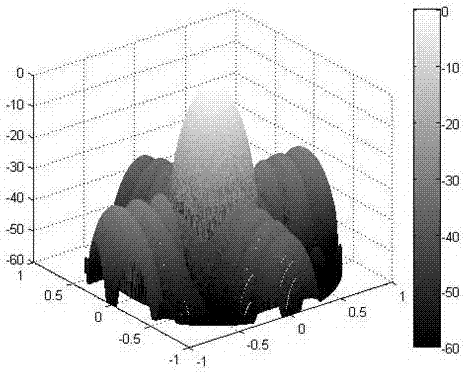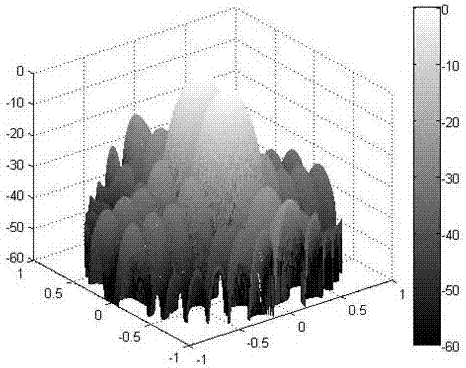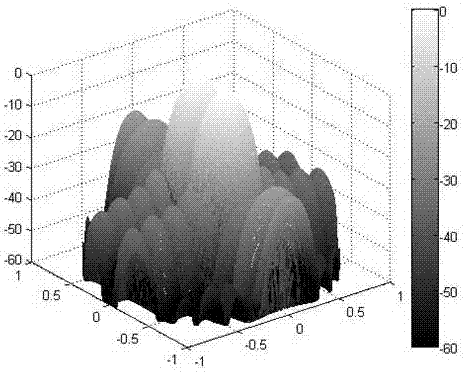Synthesis method of planar array antenna and difference beam pattern based on hybrid algorithm
A planar array antenna, hybrid algorithm technology, used in antennas, complex mathematical operations, electrical components, etc.
- Summary
- Abstract
- Description
- Claims
- Application Information
AI Technical Summary
Problems solved by technology
Method used
Image
Examples
Embodiment Construction
[0068] Below in conjunction with accompanying drawing and specific embodiment the present invention is described in further detail:
[0069] The invention provides a planar array antenna and difference beam pattern synthesis method based on a hybrid algorithm. The invention uses the MIFT method to calculate the excitation value of the shared unit corresponding to the sidelobe requirements of the sum and difference beams, and then uses the QP algorithm to calculate in parallel to obtain the satisfaction and difference The current excitation of the remaining units outside the shared unit corresponding to the radiation performance such as the maximum value of the sidelobe level of each beam, the slope of the zero point position of the difference beam, and the maximum directivity coefficient.
[0070] As an embodiment of the present invention, the present invention considers a 25×25 planar array antenna with an element spacing of 0.5λ. In order to simplify the feed network, 20% or ...
PUM
 Login to View More
Login to View More Abstract
Description
Claims
Application Information
 Login to View More
Login to View More - R&D
- Intellectual Property
- Life Sciences
- Materials
- Tech Scout
- Unparalleled Data Quality
- Higher Quality Content
- 60% Fewer Hallucinations
Browse by: Latest US Patents, China's latest patents, Technical Efficacy Thesaurus, Application Domain, Technology Topic, Popular Technical Reports.
© 2025 PatSnap. All rights reserved.Legal|Privacy policy|Modern Slavery Act Transparency Statement|Sitemap|About US| Contact US: help@patsnap.com



